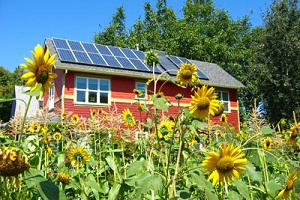Solarize Massachusetts to drive increased solar installation
 Solarize Massachusetts has scaled-up its group-purchasing program to help 17 communities in the state increase Massachusetts solar installations.
Solarize Massachusetts has scaled-up its group-purchasing program to help 17 communities in the state increase Massachusetts solar installations.
“We weren’t the first state to deploy the solarize model,” said Elizabeth Kennedy, spokeswoman for the Massachusetts Clean Energy Center. “But I do think we’re the first to scale it up to work with 17 communities at once.”
The center operated a pilot project with four communities last year. The communities selected a specific installer to work with and that installer offered deep discounts to residents who wanted to go solar. The discounts grew deeper, the more people in the community signed on to the program.
Kennedy said residents saved 8 percent on the low end up to 30 percent in communities where solar adoption was highest.
The pilot was a huge success, she said.
In the town of Harvard, there were 12 solar installations before the program. “That’s 12 going back in history,” Kennedy said.
More than 75 people applied for solar installations in Harvard through the solarize Massachusets effort. And that was common among the communities that participated. Kennedy said most saw a five-fold increase in the number of solar applications they processed.
The program works because installers can offer steep discounts when they don’t have to invest as much in customer acquisition, Kennedy said.
The Clean Energy Center offers solar education courses in the solarize communities and promotes solar adoption through coordinated outreach efforts.
While each of the communities have different utility providers, the subsidies are uniform across the state. Net-metering and a solar renewable energy credit program combine with rebates administered by the Clean Energy Center to offer an attractive package to begin with. But the real advantage of the solarize program comes from the installer discounts, Kennedy said.
The Center invited 31 designated green communities in the state to apply for the solarize program this summer and selected 17 to participate.
“These were communities that were really engaged and had plans for how they would implement solar,” Kennedy said.
Now the communities are reviewing applications from installers who want to be the preferred installer for the program.
Kennedy said there is no specific goal for this summer’s program. But she expects the center to process a few thousand applications for solar installations. That’s a lot more than the 700 or so the organization usually handles in a quarter, Kennedy said. “We’re expecting exponential increases,” she said.



